 If you’re in recruiting, I’m sure that by now you’re probably aware of the fact that as of last week, Facebook officially announced that they would be rolling out the ability for employers to post jobs on their Company Pages.
If you’re in recruiting, I’m sure that by now you’re probably aware of the fact that as of last week, Facebook officially announced that they would be rolling out the ability for employers to post jobs on their Company Pages.
While this feature has been in beta for some months now, last week’s long awaited announcement marked the first public confirmation that Zuck & Co. was officially moving into the already crowded online recruiting space.
Facebook’s move into job postings has proven to be a contentious topic among many in the recruiting industry; some see a sourcing silver bullets, others pure anathema.
It will obviously take some time to determine whether Facebook’s most recent move towards world domination will make any sort of meaningful impact on the way candidates find jobs, and companies find candidates – or whether the platform will quickly go the way of Branchout, BeKnown by Monster, or any of the dozens of attempts to transform Facebook into a viable recruiting solution that ended, unilaterally, in abject failure.
As a tech recruiting leader, I remain cautiously optimistic about Facebook’s foray into talent acquisition. The fact that I’m actually a practitioner, responsible for filling reqs, is simultaneously also what’s causing me to approach this new offering with some skepticism.
Over the years, I’ve seen a ton of recruiting tools that were purportedly going to change the world of recruiting, and yet, ultimately, our world is more or less the same as it ever was.
So, while I’m excited about the prospect of Facebook finally getting into the recruiting game, I think that my cautious approach of “show me, don’t tell me“ is imminently justified (and rightfully expected).
Piece Of Pie.

While Facebook has built their business by rolling out features and functions ahead of the market, the truth is that in this case, Facebook has quite a bit of catching up to do. The job board wars have dragged out for close to a decade now, so essentially offering the same service to a saturated market means Facebook, while powerful, is pretty late to the game.
Of course, many companies of all sizes and across long industries have been experimenting with the possibilities of recruiting on Facebook at least as long as “poking” was still a thing (seriously, though – how the hell does that feature still exist?), but in all these years, it’s never really made any sort of actual impact on our industry.
LinkedIn, meanwhile, has established what seems to be a fairly firm grasp on the recruiting market; their Talent Solutions product still pulls in around $2 billion (that’s “billion,” with a B) every year. This means that recruiters and employers count for roughly two thirds of their ENTIRE annual revenue.
The sheer mind and market share LinkedIn has long enjoyed, coupled with the fact they’ve become an entrenched and seemingly intractable solution in most recruiting departments, means that this “professional network” remains a formidable player.
Love them or hate them, they’re still raking in cash hand over fist, and remain an indispensable and integral component of many employers’ talent attraction strategies. Rumors of the death of LinkedIn have been greatly exaggerated.
Of course, had Facebook aggressively rolled out their job posting tool prior to the Microsoft acquisition, there might not be as much of a question as to whether or not they stand a chance in the recruiting arms race.
But given the deep pockets of Microsoft and the fact LinkedIn remains more or less a money printing machine, it stands to reason they have the resources and war chest to outspend the competition and continue to rely more on money than innovation to maintain their market dominance.
LinkedIn has a history of putting a premium on profits instead of products, and, as the old adage goes, it takes money to make money – and the company has more of that, it seems, than ever before. They’re the Oracle of recruiting; when you have the market cornered, you don’t really need innovation to keep raking in cash.
Of course, at one point in time, the bygone job boards of yesteryear were once important components of the S&P 500, establishing ubiquity after shelling out millions for stuff like Super Bowl ads, elaborate promotions and myriad print partnerships to become both household names and major consumer brands. This proves, of course, that no matter how flush times seem, you can still run out of time.
LinkedIn helped cement the fate of many wobegone job boards over the years, proving that even cash can’t save some companies from going the way of the dinosaurs and so many job dot coms. So it would only be fitting justice if they similarly spent their way into obsolescence as Facebook returned the favor.
Hey, a recruiter can always dream, I guess.
Wicked Garden.

Now, let’s be explicitly clear, here. Microsoft didn’t dump a staggering $26 billion dollars into LinkedIn so that they could continue to offer their data to the public without expecting the public to pay for the privilege.
You don’t drop that kinda dime for the purposes of democratizing data or open access and integrations. The public good is not a profit driver, people.
And that’s really what this banner acquisition was all about; given the hefty price tag involved, one can only assume that Microsoft is furiously working to integrate LinkedIn and its features behind the walled garden that protects the rest of the Microsoft kingdom.
As many pundits have previously pointed out, Microsoft clearly seems to be positioning themselves as a one stop shop for all things business. The sheer breath of their product offering, from Skype to MS Office to Cortana, represents the opportunity for the Redmond based behemoth to effectively build a brand capable of holding enterprise employers hostage.
The goal is to become such an essential part of the way every business does business that the company can effectively name its own price, which is a pretty good position for any SaaS provider to be in (see: Taleo). This isn’t new (or news) by any means; that LinkedIn has been walling off their products has been well documented for some time now.
Their MO, typically, involves shutting off access to their supposedly “Open API” for any product that LinkedIn viewed as a potential competitor, but not an acquisition target (hey, Rapportive – how are things going for you these days?).
The company has an established track record of buying any would be competitor outright, slowly sunsetting its features and functionality, and finally killing off the product the minute the acquired executive’s golden handcuffs can be unlocked.
But, of course, I digress. We’re talking about Facebook here. Of course, the similarities are striking; it seems that Facebook is already adopting a similar sort of “castle and moat” approach to employers, seeking to manage the entire hiring process directly on their platform, specifically within Facebook Messenger.
And while there is undoubtedly some logic (and merit) to the obvious efficiencies this sort of streamlining can have in the hiring process, there are some obvious drawbacks to this approach, too.
On the plus side, being able to communicate and engage with candidates directly on the same platform they spend most of their lives on in the first place – checking in somewhere between 10-15 times a day – is just about as efficient as recruitment marketing and candidate development can get.
Compare this to the amount of times your average job seeker checks their LinkedIn inbox, and Facebook starts looking even better.Furthermore, knowing exactly when the candidate reads a message and having the ability to know and track the fact that recruiting outreach is actually received is also a capability Facebook offers that can’t be overlooked.

Considering there are dedicated point solutions in the HR Tech space specifically for this function, the new Facebook offering seems like it could emerge as an immediate category killer – and add immediate value for employers looking to engage with top talent online (and measure those results).
The biggest question surrounding Facebook’s future approach to jobs will focus almost entirely on how open their API and developer access are for third party platforms, specifically systems of record like applicant tracking or customer relationship management systems. ATS and CRM integration are a critical component of whether or not Facebook lives up to its potential to disrupt the recruiting industry as promised.
If Facebook follows LinkedIn’s lead and completely walls off their platform, refusing to play nice with other systems, then it becomes just another point solution in a market with myriad options, moving us further away from the promised land and Utopian vision of a unified, user friendly recruiting system.
Having to move between multiple platforms and unintegrated interfaces invariably has a negative impact on the overall rate of adoption of any SaaS solution by recruiting end users, which is ultimately what makes or breaks every tool, no matter how “groundbreaking” they purport to be.
This was the case long before Facebook jumped into the game, and should continue to be the single most important factor in determining a product’s long term success for the foreseeable future (how goes it, JobFox?).
If recruiters don’t use your product, then you’re pretty much screwed. Period.
Flies In The Vaseline.

One of the other major remaining question marks confronting the future of Facebook for recruiting will lie not with Facebook itself, but rather, with those HR and recruiting teams who choose to double down and throw all of their recruiting eggs into their Facebook basket. It’s clear many companies have long been comping at the bit to find a viable recruiting solution for Facebook.
After all, the countless hours and dollars spent building and maintaining a community and audience on their Company Page now represent an investment – and unique opportunity – to transform those already engaged fans into active candidates and potential employees.
Turning fans into hires won’t be easy, of course, but the groundwork for recruiting success has already gone into many Company Page, meaning those employers can focus Facebook recruiting largely on converting candidates instead of acquiring applicants, as has historically been the case for companies recruiting on Facebook.
Even for companies without a major consumer brand presence, though, the business case for posting jobs on Facebook is pretty simple – after all, the price is right. After all, posting jobs on Facebook is free, more or less guaranteeing recruiting ROI. What do employers have to lose with that price tag?
Of course, ask Craigslist exactly how valuable free job postings are; they’re the only other platform I can think of where you can get a job and a used futon on the same site. But unlike Craigslist, Facebook will provide insights into analytics, job posting performance and related activity their ads generate.
While the free pricing seems odd, if there’s money to be made off recruiting, Facebook will figure out exactly where those opportunities really lie – and have the luxury of time and resources to optimize and perfect their monetization model and recruitment market offerings to product the highest possible profits. This is what Facebook does, and the fact is, they’re pretty damned good at it.
In 2016 alone, Facebook was on track in Q4 to finish the year with $20 billion in ad revenue. With a user base that’s only a quarter of the size, however, LinkedIn was able to generate $2 billion from recruiters alone. That number looks a whole lot more enticing for Facebook when you multiply that potential market by a factor of four.
If usage and data trend the right way, of course, Facebook will almost inevitably start charging for job postings at some point; it’s also reasonable to assume that they’re also exploring ancillary offerings and alternative product sets for recruiting end users to augment their core job posting offering and capture an even greater share of the TA market.
Even before these other avenues are explored, it makes perfect sense that Facebook could easily turn that $2 billion a year LinkedIn currently generates from their Talent Solutions product, statistically speaking, into a brand new $8 billion dollar line of business to shore up their already impressive bottom line.
Given the market conditions and the potential purchasing power recruiting represents, Facebook would be crazy not to make a concerted play for this industry. Let’s be real: the ability to add even $8 billion to a company’s bottom line out of more or less nothing – and this estimate is likely conservative, long term – is not an opportunity that comes around every day.
Even for Facebook.
Take A Load Off.

When Facebook finally figures it out, looking at LinkedIn provides a pretty clear precedent of the sort of premium companies will be willing to cough up for access to their jobs product – and writing your own checks is always a pretty good place for any business to be in.
Given the precedent LinkedIn has already established, it’s likely that companies will continue to shell out hundreds of thousands of dollars every year to blindly message candidates who have never even heard of their company, much less have any discernible interest in pursuing a career opportunity there.
Now, I suppose Facebook could take the same tact, but given their existing user base (read: captive audience), this strategy could conceivably work to create engagement, an area where LinkedIn continues to struggle. Freemium comes to recruiting, I guess. Hell, some day you might be able to power up in Clash of Clans by purchasing a job posting.
Stranger things have happened.
What Facebook needs to stay proactive about, however, is ensuring that they provide recruiters and job posters the same sort of metrics and analytical insights that company and brand Page Admins have long had access to.
If Facebook is going to create the same “gotta have it, or else” position in the market that LinkedIn has long enjoyed, it’s imperative for them to be able to deliver real data and actionable analytics to the stakeholders responsible for begging for budget. You know, be able to back up the buzz with a quantitative business case – crazy, I know.
All of this, of course, assumes that when Facebook inevitably offers a premium or paid jobs model, that the companies buying this recruiting offering actually look at the data instead of just hitching their wagon on the sexiest, coolest new tool and hoping for the best, as has so often been the case.
Companies will likely need to dedicate a “project manager” specifically to oversee their Facebook recruiting efforts, not only collecting and interpreting the data, but managing candidate experience and talent community management, too.
Companies have always decentralized their LinkedIn administration over the years, leading to underutilized data, poor or incomplete reporting and inability to measure or manage recruiting ROI.
Companies cannot make the same mistake with Facebook, because unlike with LinkedIn, it’s unlikely talent acquisition is going to ever own a consumer facing company page. That means working with counterparts in corporate communications and marketing is going to be critical in determining the relative success of any paid Facebook recruiting initiative.
Of course, who the voice of the company should be for candidates, and who owns the message and community conversation on Facebook, is an entirely different discussion.
Dead And Bloated.

When talking about Facebook, and I suppose, social media in general, we’d be remiss not to confront the obvious elephant in the room: the fact that the biggest single driver for success is directly correlated with how open and accessible any particular platform actually is.
In other words, he more open the network, the better the results, in recruitment advertising or otherwise.
There are a handful of companies out there that still struggle with how much social media access to give employees at work, who have yet to develop any actual social media policy or process, who still continue to struggle with the fundamentals of social media in the workplace, irrespective of its practical applications.
Despite the fact that in 2017, social has become a ubiquitous part of our daily existence, many organizations continue to restrict or entirely prohibit their employees from accessing Facebook at work. This poses an interesting paradox, particularly since Facebook is requiring any interaction between company and candidate generated by Facebook jobs to occur exclusively within the Messenger platform.
How do you provide a positive candidate experience, guarantee prompt recruiting related replies and create meaningful engagement if your company prohibits Messenger use at work?
Surely, we’re not going to let active candidates rot in an inbox and rapidly lose interest in the 8-12 hours we put in during regular business hours until we can get home and get past the company firewall, right?
Of course, if you are able to openly access Facebook at work, we come full circle and return to the issue of user adoption. Who within your recruiting team will have the responsibility of being the primary community manager and recruiting point of contact to candidates? Who will be responsible for managing and monitoring the site on a day-to-day basis?
This is a serious question, and one internal talent teams really need to think about before coming to any decisions. Facebook requires constant monitoring, and thus, constant manpower, in order to generate optimal results. This is one problem AI and machine learning can’t solve (yet).
And it’s likely the same reason why so few companies have adopted capabilities like chat windows or other real time engagement tools directly on their career sites, despite the fact that from a technological perspective, this is pretty damned easy to do.
The reason recruiters aren’t doing it is simple: it takes a ton of time and bandwidth to make social recruiting work, no matter what platform we happen to be talking about. And those resources are increasingly rare in most recruiting organizations today.
Big Bang Baby.

The most obvious area of opportunity for companies recruiting on Facebook, on closer look, lies not in targeting the highly skill, highly specialized positions most organizations focus their social recruiting efforts on, but instead, attracting candidates for non-exempt roles or jobs that tend to be low skill, high turnover, high volume sorts of positions.
Again, in this area, Craigslist established a successful precedent for leveraging job postings, so much so that the company was able to move to a pay-per-pots model in many of their most popular markets. I imagine that given the audience and their mindset when it comes to Facebook, recruiting for white collar jobs is much less likely to show real results (at least over the short term) than non-exempt positions or contingent/project type of roles.
Given the fact that high turnover, high volume jobs are the most likely to succeed on Facebook initially, going after these type of roles should provide the data and ROI (as well as some lessons learned) to ultimately determine whether or not the platform is worth investing in experienced, exempt or executive hiring.
As a public company, what will ultimately drive Facebook’s future when it comes to recruiting – and what, exactly, their revenue model ultimately looks like – will depend largely on how quickly they can fuel growth and how much revenue potential exists in this or similar job products.
While there’s probably no immediate expectation at Facebook of immediate market domination, you can bet they’ll be keeping a keen eye on the results of their job postings launch and start exploring how, exactly, they can make the most money from employers.
Ultimately, the value of a job posting will have to be more than that of a regular Facebook ad, of course, for the company to generate enough revenue to make this a focal point of their future business, although given the billions of dollars a year employers spend on job postings, it’s not too far fetched to imagine this being one of Facebook’s biggest future growth drivers.
Now, don’t get me wrong. I personally don’t expect that the revenue from job postings will ever eclipse the cash cow that is Facebook Ads, but it sure will add some healthy margins and diversified offerings to their portfolio and their bottom line.
As a shareholder of Facebook (disclaimer alert) I have a personal interest in seeing the company’s stock succeed, although I understand that for this particular stock, there are an infinite amount of variables, both known and unknown, that will determine this success.
It’s a long play, but that’s not a bad thing; for Facebook Jobs to work, both employers and candidates are going to have to commit for the long haul, too.
Between The Lines.

At this point in the game, LinkedIn shouldn’t be particularly worried. Yet.
But make no mistake, they are paying close attention to Facebook Jobs, because its relative success or failure and their own seem so inexorably intertwined.
For years now, many recruiters and talent acquisition leaders have been quietly clamoring (and privately hoping) for a viable competitor to LinkedIn to emerge.
After all, their hiring hegemony have created a tenuous position at the top, and most recruiters would be happy to see them pay a price for their hubris.
But toppling this still dominant player isn’t easy, and every other would be contender still hasn’t come close to successfully challenging LinkedIn’s long tenure at the top. Even for a company like Facebook, expectations need to be tempered.
Facebook has previously shown that they’re a company willing to adapt and evolve as needed, and that their products and platform are largely driven by actually listening to their customer base (a skill in which LinkedIn is notoriously lacking).
I mean, it doesn’t take a genius to figure out that while Facebook might be rolling out jobs, LinkedIn is trying its best to stay viable and a step ahead of the competition by apparently trying to emulate Facebook as closely as possible.
Their most recent “innovation,” the new UI on the homepage, is basically an egregious rip-off of Facebook’s user experience and overall design. Imitation might be the highest form of flattery, but it still sends a pretty clear signal where the battle lines are being drawn for recruiting.
Facebook Jobs represents a great opportunity and a potentially disruptive development for recruiting and hiring, but it’s far too early to tell how the future of Facebook recruiting is going to unfold. All I know is, it’s going to be interesting to sit back and watch the action.
Because if it succeeds, well, so too will recruiters, employers and the candidates they’re trying to hire. And really, at the end of the day, that’s what this business is all about, no matter what source of hire you happen to be hiring from.
 About the Author: Pete Radloff has 15 years of recruiting experience in both agency and corporate environments, and has worked with such companies as Comscore, exaqueo, National Public Radio and Living Social.
About the Author: Pete Radloff has 15 years of recruiting experience in both agency and corporate environments, and has worked with such companies as Comscore, exaqueo, National Public Radio and Living Social.
With experience and expertise in using technology and social media to enhance the candidate experience and promote strong employer brands, Pete also serves as lead consultant for exaqueo, a workforce consulting firm.
An active member of the Washington area recruiting community, Pete is currently a VP and sits on the Board of Directors of RecruitDC.
Follow Pete on Twitter @PJRadloff or connect with him on LinkedIn, or at his blog, RecruitingIn3D.




 If you’re in recruiting, I’m sure that by now you’re probably aware of the fact that as of last week, Facebook
If you’re in recruiting, I’m sure that by now you’re probably aware of the fact that as of last week, Facebook 







 About the Author: Pete Radloff has 15 years of recruiting experience in both agency and corporate environments, and has worked with such companies as Comscore, exaqueo, National Public Radio and Living Social.
About the Author: Pete Radloff has 15 years of recruiting experience in both agency and corporate environments, and has worked with such companies as Comscore, exaqueo, National Public Radio and Living Social.
 I have a confession to make. There was a time in my career when I just didn’t understand what, exactly, went on behind the scenes before every hire.
I have a confession to make. There was a time in my career when I just didn’t understand what, exactly, went on behind the scenes before every hire.
 Considering the similarities between the two functions, it only makes sense to consider adapting one of the more proven, tested and successful models long leveraged by top performing sales teams to recruiting.
Considering the similarities between the two functions, it only makes sense to consider adapting one of the more proven, tested and successful models long leveraged by top performing sales teams to recruiting. For recruiting, a similar equation would be used to calculate recruitment velocity:
For recruiting, a similar equation would be used to calculate recruitment velocity:
 Another important factor to consider is how much value your hires will bring to your business and your bottom line. In sales, this P&L impact is referred to as the “
Another important factor to consider is how much value your hires will bring to your business and your bottom line. In sales, this P&L impact is referred to as the “ About the author: Bob Memmer is the Senior VP, Commercial Sales at
About the author: Bob Memmer is the Senior VP, Commercial Sales at 


 A recent survey I put together asked “If LinkedIn went away tomorrow, what percentage of recruiters would be gone in six months?”
A recent survey I put together asked “If LinkedIn went away tomorrow, what percentage of recruiters would be gone in six months?”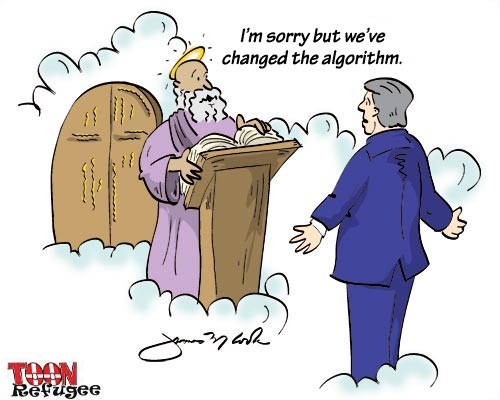

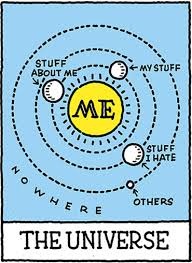


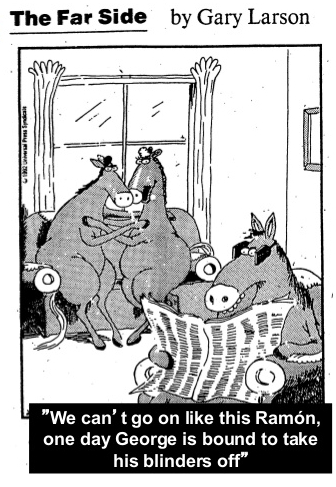


 If you need any further proof that tech hiring is hot, consider the fact that pretty much the default search for any sourcing or recruiting CRM product demo out there is some variation of “software engineers in San Jose.”
If you need any further proof that tech hiring is hot, consider the fact that pretty much the default search for any sourcing or recruiting CRM product demo out there is some variation of “software engineers in San Jose.”




 Nervous is one word to describe how companies and job seekers are feeling about the April 2017
Nervous is one word to describe how companies and job seekers are feeling about the April 2017  An increase of offshoring as companies hire expensive top talent from abroad.
An increase of offshoring as companies hire expensive top talent from abroad. Top talent will have the upper hand. Large companies will dominate the US and startups will look to go abroad.
Top talent will have the upper hand. Large companies will dominate the US and startups will look to go abroad. About our Author:
About our Author:
 I was recently watching a bunch of those old black and white movies from the “Golden Age” of Hollywood.
I was recently watching a bunch of those old black and white movies from the “Golden Age” of Hollywood. The smoky haze and the Silver Screen were inexorably intertwined for decades, a ubiquitous accessory underscoring the fact that smoking used to be seen not only as acceptable, but aspirational, too.
The smoky haze and the Silver Screen were inexorably intertwined for decades, a ubiquitous accessory underscoring the fact that smoking used to be seen not only as acceptable, but aspirational, too. Yeah. Cancer.
Yeah. Cancer. Which got me thinking about hiring, in particular, and the side effects of smoking we never really talk about – particularly, when it comes to how smoking not only impacts personal lives but just as profoundly, professional ones, too.
Which got me thinking about hiring, in particular, and the side effects of smoking we never really talk about – particularly, when it comes to how smoking not only impacts personal lives but just as profoundly, professional ones, too.
 Let’s say that you work for a company whose corporate headquarters just happen to be in the beautiful Mile High City of Denver, Colorado. It’s a major transportation hub, has more sunny days than any other major city in the US (true story) and consistently ranks in the top 10 of those “best places to live” lists.
Let’s say that you work for a company whose corporate headquarters just happen to be in the beautiful Mile High City of Denver, Colorado. It’s a major transportation hub, has more sunny days than any other major city in the US (true story) and consistently ranks in the top 10 of those “best places to live” lists.
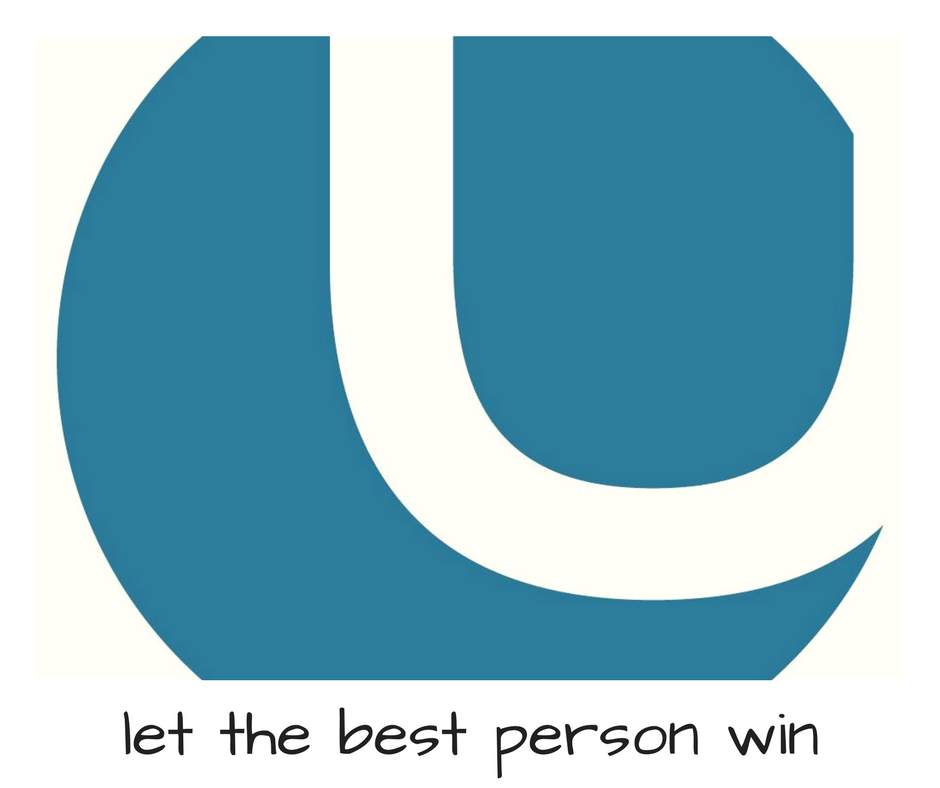
 I have worked with Human Resources Information Systems (HRIS) for over 16 years. It goes without saying that technology today is much different than is was back then. Since I have already dated myself, I am not embarrassed to tell you that back in the day, there was no LinkedIn or Facebook. In fact, we barely had email. Now, there are hundreds of tools out there. Don’t believe me? Check out the recent post by William Tincup who listed
I have worked with Human Resources Information Systems (HRIS) for over 16 years. It goes without saying that technology today is much different than is was back then. Since I have already dated myself, I am not embarrassed to tell you that back in the day, there was no LinkedIn or Facebook. In fact, we barely had email. Now, there are hundreds of tools out there. Don’t believe me? Check out the recent post by William Tincup who listed  Let the Best
Let the Best  After creating a free account and accessing the application, you find that you have to start by setting up a new job. This is the area where you will create the job description. If all you do is use this for helping you create job descriptions, I think you will find it to be valuable. I like the way it helps you create a new job description.
After creating a free account and accessing the application, you find that you have to start by setting up a new job. This is the area where you will create the job description. If all you do is use this for helping you create job descriptions, I think you will find it to be valuable. I like the way it helps you create a new job description.


 The mobile app for interviewing integrates with the online tool and provides the interviewer with the structured questions. The interviewer can record the interview, star important sections, take pictures of relevant items. Additionally, with a single tap, you can record the interviewer’s impression for the specific answer given. All of this allows the interviewer to focus on the most important thing for an interview – the person. All of this is then provided within the job.
The mobile app for interviewing integrates with the online tool and provides the interviewer with the structured questions. The interviewer can record the interview, star important sections, take pictures of relevant items. Additionally, with a single tap, you can record the interviewer’s impression for the specific answer given. All of this allows the interviewer to focus on the most important thing for an interview – the person. All of this is then provided within the job. About our Author:
About our Author:
 It sounded, on the surface, like a can’t miss premise. eHarmony, one of the world’s largest online dating sites, would leverage its extensive data set, proprietary algorithm and established track record of finding fit to match candidates with jobs.
It sounded, on the surface, like a can’t miss premise. eHarmony, one of the world’s largest online dating sites, would leverage its extensive data set, proprietary algorithm and established track record of finding fit to match candidates with jobs. Starter Marriage: Elevated Careers Back on Market and Looking for Love.
Starter Marriage: Elevated Careers Back on Market and Looking for Love.

 I’ll admit it, I am a bit socially awkward. Thankfully, I have my wife and daughter to love this valentines day but I often think back to the days when Valentine’s Day just enhanced my “awkwardness.” You don’t have to worry about that today. Because Mark Zuckerberg and his flock of Facebook lackeys are hellbent on forcing us to have more friends.
I’ll admit it, I am a bit socially awkward. Thankfully, I have my wife and daughter to love this valentines day but I often think back to the days when Valentine’s Day just enhanced my “awkwardness.” You don’t have to worry about that today. Because Mark Zuckerberg and his flock of Facebook lackeys are hellbent on forcing us to have more friends.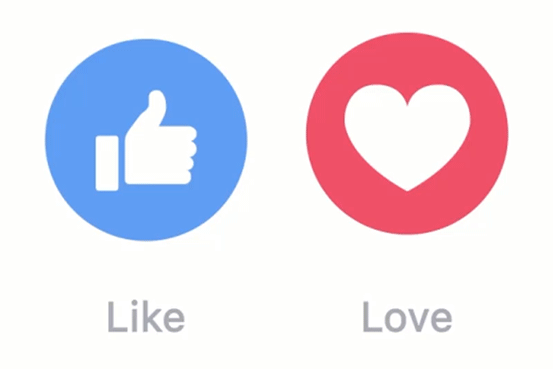 This is just another play in Facebooks race to dominate
This is just another play in Facebooks race to dominate
 Done is Better Than Perfect
Done is Better Than Perfect Dan Louks has been working in RPO for about three years now, having spent time as both a Recruiter and a Sourcer. In a previous life, he has worked primarily in radio broadcasting and retail sales. Married with a four-year-old daughter, he is either hanging out with them or playing retro video games in my free time. Connect with him on
Dan Louks has been working in RPO for about three years now, having spent time as both a Recruiter and a Sourcer. In a previous life, he has worked primarily in radio broadcasting and retail sales. Married with a four-year-old daughter, he is either hanging out with them or playing retro video games in my free time. Connect with him on 
 I’ve often described job-seekers as the most underserved customer group out there, and I still think it is.
I’ve often described job-seekers as the most underserved customer group out there, and I still think it is. According to
According to  2. Surveys could help capture feedback on candidate experience, but no one is doing them.
2. Surveys could help capture feedback on candidate experience, but no one is doing them. 4. Redundant data entry frustrates candidates, driving application abandonment.
4. Redundant data entry frustrates candidates, driving application abandonment. 6. 77% of companies lack a robust social media strategy.
6. 77% of companies lack a robust social media strategy. About the Author: Ed Newman is the Chief Evangelist at
About the Author: Ed Newman is the Chief Evangelist at 








